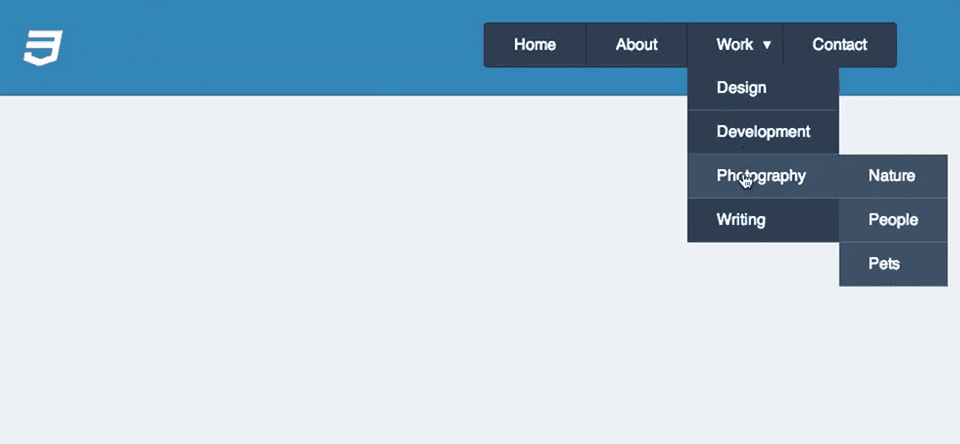
Additionally, using semantic tags like actually negate the need for a class name like “nav,” therefore reducing the complexity of your site’s markup. Using semantic tags, though it may cause another level of nesting in your markup, actually creates a better-organized and accessible page. Now imagine you’re using a screen reader and can’t see the rest of the page. However, it wouldn’t be apparent that these particular links were the main navigation for the page, or even that they should appear within the context of a list.

Sure, it would still be a collection of links.
#Css stack menu items code#
But imagine this snippet of code was taken out of context. This is even less markup than the example provided above. It’s true: you could easily reproduce the same visual style and behavior with the following markup: Your markup will look something like this: Since navigation bars typically only contain links within the same website, specifying a target isn’t necessary except for special cases. to move back a folder.Īdditionally, you can specify the link’s target, or where the link should open: in a new tab, a new window, or in the current window.
#Css stack menu items full#
An absolute path is a full URL like “.” With site navigation, you’re more likely to use a relative link, which is a reference to a file within the same directory as the referring page, like “/contact.” This reference can be either an absolute or relative path. Each link, or, points to a link, which is defined by the using the anchors href attribute. Within the, each navigation link is housed in an. Then, because the links don’t necessarily belong in any numbered order, is the best choice for list type. Since this list serves the purpose of navigation, a tag is appropriate as the containing parent element. Within each list, items are wrapped in list item tags,, which in this case will contain anchors that link to other pages. HTML has several list types: an ordered list, unordered list, and definition list. Marking up the Navigation BarĪt its core, a navigation bar is a simple list of links. To help prevent high load times, it’s best to minify the shiv script, using a tool like JSCompress. Otherwise, there may be a flash of unstyled content on the screen while the script loads. Make sure that you include this file after you link to your stylesheets. Include the script in your file in a conditional comment targeting IE9 and lower. It works well out-of-the-box, so there’s little need for configuration. This script allows legacy version of IE to use html5 and provides some basic styling. If you’re working on a project that requires support for older browsers like IE7 and IE8, you’ll need to include a small script called html5shiv (or html5shim) in a conditional comment in your. Additionally, having sound markup structure is efficient and can eliminate the need for class names (for example, instead of, use ) and therefore keep your CSS files smaller and better performing.

Semantic markup not only keeps the document tree neat and tidy, it assists users who experience the Web site through means other than pixels in a browser window, such as a screen reader or other assistive device. Since most modern browsers support HTML5, it’s best to take advantage of these new descriptive tags to give your markup contextual meaning. However, new semantic tags like, , and better organize markup into meaningful sections and reduce the need for repetitive class names in your stylesheets. Using HTML5 Semantic Tagsīefore HTML5, the tag was a one-size-fits-all containing element for anything from main text sections to footers.

There are many different ways to achieve the same visual result, but some structures offer advantages like semantic meaning and can help you keep your corresponding CSS stylesheets in order. Solid HTML structure is the foundation of any Web page.



 0 kommentar(er)
0 kommentar(er)
